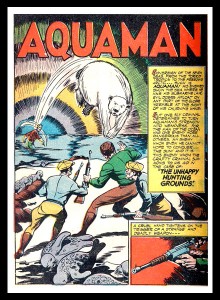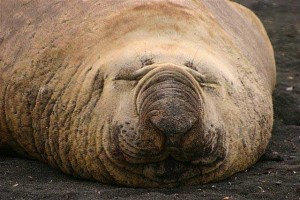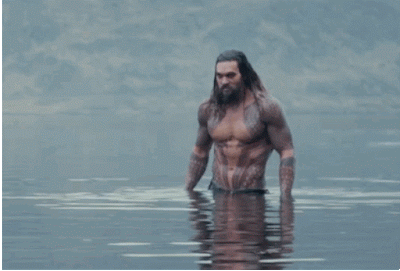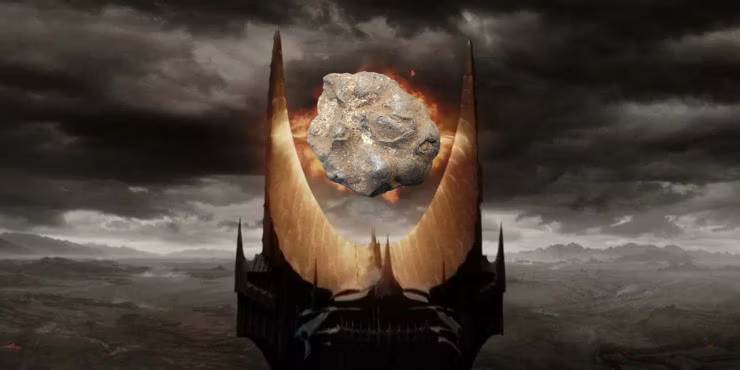This is an update and repost of our seminal article on the science of Aquaman, revised and expanded.

Aquaman may not be everybody’s favorite superhero, but since his creation in 1941, he has been among DC’s most enduring icons. During the Golden Age of comics, he held his own against Superman, Batman, and Wonder Woman. Silver Age Aquaman was a founding member and eventually leader of the Justice League. His powers, tied to the ocean, forced writers to create a compelling, complex hero with explicit limitations. In the early days, when Superman’s strength was practically infinite, and Batman’s brilliance was unmatched, Aquaman had to become more than just a superhero, he had to be a person.
If Superman existed to show us how high the human spirit could fly, and Batman to show us the darkness within even our most noble, Aquaman is here to show us the world that triumphs in our absence. The ocean is not ours, and no matter how great our technology, we will never master it as we have mastered land. Aquaman has. Through this lonely ocean wanderer, we can experience a world that we can never truly command. In many ways, Aquaman was stronger than the Man of Steel and darker than the Dark Knight. He knew loneliness that the orphan and the alien exile never could.
Even though Aquaman had to fight harder, endure the jokes of other, less interesting heroes, and find relevance in an ecosystem hostile to the humans that had to empathize with him, Aquaman was never forced to confront the truly horrifying consequences of life in the ocean.
The penetrating cold
Aquaman is, for all intents and purposes, a marine mammal. With the exception of a healthy mane in later incarnations, he is effectively hairless. As a human, we would expect his internal body temperature to hover around 99°F, or about 37°C. Even at its warmest points, the surface temperature of the ocean around the equator is only about 80°F/27°C. At the poles, ocean temperature can actually drop a few degrees below freezing. In the deep sea, ambient temperature levels out around 2 to 4°C. The ocean is cold, and water is a much better thermal conductor than air. Warm blooded species have evolved many different systems to manage these gradients, including countercurrent heat exchangers, insulating fur, and heavy layers of blubber. This is what a marine mammal that can handle cold waters look like:

Aquaman is not just a human, he is an atypically uninsulated human. If the man has more than 2% body fat, I’d be shocked. In contrast, warm-water bottlenose dolphins have at least 18 to 20% body fat. Anyone who SCUBA dives knows that, even with a 12 millimeter neoprene wet suit, after a few hours in 80°F water, you get cold. Aquaman, lacking any visible insulation, should have slipped into hypothermia sometime early in More Fun Comics #73. He is built for the beach rather than the frigid deep.

Concentration gradients are not for the faint of heart
This raises the next issue with life in the water, osmotic pressure. The human body is hypotonic compared to seawater. That means that there are more molecules in seawater than in our cells. Assuming Aquaman is drawing seawater into his lungs, sinuses, and other air chambers, he must maintain internal equilibrium within his body for his cellular transmembrane proteins to function. So his cells begin expelling water to increase their internal molecular density. As he loses water, his cells shrivel and begin to lyse. The kidneys, likely, will be the first to go, but most of his internal organs, especially those in the respiratory and circulatory system will fail. If he hasn’t frozen to death, he will dehydrate, ending his Justice League tenure as shriveled human jerky.
The only silver lining for this Silver Age hero is that without efficient ion-exchange pathways, his brain will shut down as his blood becomes saturated with sodium.
And then you get bent…

Let assume that, through the magic of comics, Aquaman has managed to overcome the challenges of temperature and osmotic pressure. He still must face the dreaded threat of all divers: decompression sickness, AKA “the bends“. Aquaman breathes underwater, which means that he can somehow extract oxygen from seawater and pump it across a membrane. At pressure, such as what you might experience a few hundred feet beneath the surface, oxygen is toxic, even fatal. Divers breathing pure oxygen suffer traumatic injuries. Even if he somehow manages to extract an appropriate mixture of oxygen, carbon dioxide, and nitrogen, Aquaman still must contend with the crippling effects of gas expansion in his blood stream. As he changes depths, bubbles of nitrogen come out of solution, clogging his circulatory system and causing possibly fatal embolisms.
Even deep-diving marine mammals suffer from the bends. Sperm whales cope with gas accumulation by depositing excess gasses in their bones, creating a porous, brittle skeleton, riddled with osteonecrosis: patches of dead bone. For a superhero, bones that snap like a sponge are not conducive to fighting evil. And Aquaman fights, and swims, and pushes his body to its supra-physical limits.
Calories out must equal calories in
Aquaman is one of the fastest swimmers in the ocean. He chases German U-boats, out-swims dolphins, can even catch up to a torpedo. The Justice League reports that Aquaman can swim at 3,000 meters per second, or 6,800 miles per hour. We’re talking Speed Force speeds, here. For comparison, Olympic swimmer Michael Phelps can sustain a speed of 4.7 miles per hour, and Phelps can’t even outswim a great white shark. To maintain that pace, Phelps burns about 1,000 calories per hour while racing, up to about 6,000 calories a day. If Aquaman were to spend an hour swimming at full speed, he would burn 1.4 million Calories. Even to survive a day strolling at a leisurely 10 miles per hour, enough to travel from Beaufort, North Carolina to Bermuda in about 3 days, Aquaman would need to replace 48,000 Calories each day.
The ocean is full of food. Tuna contain a hearty 1440 Calories per kilogram, so Aquaman could get away with eating a bit more than 33 kilos of tuna per day. Unfortunately, tuna are fast. Aquaman would have to burn even more energy chasing them down. And that’s assuming he wants to eat a dense, energy rich fish. Knowing Aquaman, he probably understands tuna over-fishing better than most. Odds are, our hero is eating from the bottom of the food chain. Since he won’t be digging his pearly whites into anything substantial, it looks like plankton soup is on the menu. This means that, just to stay alive (let alone do battle with the Legion of Doom), Aquaman must eat pretty much continuously.
Thankfully, due to his most notable power, Aquaman can maximize his caloric efficiency by commanding his meals to swim to him, but that brings us to the single most horrifying aspect of being Aquaman:
The constant, unceasing screams of dying marine life
Golden age Aquaman can talk to sea life. No matter how they protest, all modern iterations of Aquaman also talk to marine life. If they claim that they simply “command” sea life, they are lying. Aquaman talks to fish. Period.

Even excluding humans, the ocean is a brutal place. Aquaman, alone is consuming untold millions to sustain his svelte, 48,000 Calorie-per-day, figure. Eating continuously, he has no time to cook or even humanely kill his prey. He eats, and eats, and eats. He must be surrounded by the psychic screams of every zooplankter that enters his cold-hearted gullet, each one, begging for mercy as it plunges into his hypertonic stomach.
His victims aren’t the only ones he is forced to hear. Throughout the ocean, predators stalk their prey, parasites consume the eyes, tongues, and gonads of their unwilling victims. Superman avoids the screams of the suffering by being a callous alien with a hyper-narcissistic code that forbids him from “interfering” with the path of human history (which is why he’ll swoop in to stop a mugger, but has no problem letting Adolf Hitler march across Europe). Aquaman, however, loves the ocean with every porous, necrotic bone in his body. He is its protector. Which means that every dying sea creature breaks his tachycardic heart.
And we haven’t even touched the consequences of an ocean exploited by human beings. Aquaman can see the scars left by every trawl. Aquaman can feel the rumble of deep-sea mining machines. Every offshore drilling platform is a spear through his own chest. He knows the name of every fish, dolphin, and crab whose life has been taken by our nets and lines. His life is the constant, horrible drone of unspeakable, unstoppable death.
Hey Team Ocean! Southern Fried Science is entirely supported by contributions from our readers. Head over to Patreon to help keep our servers running an fund new and novel ocean outreach projects. Even a dollar or two a month will go a long way towards keeping our website online and producing the high-quality marine science and conservation content you love. Joining our Patreon is the only way to get one of these awesome Jaunty Ocean Critter stickers. If you enjoyed this, check out some of Andrew’s science fiction novels, set in a flooded world or deep space.
